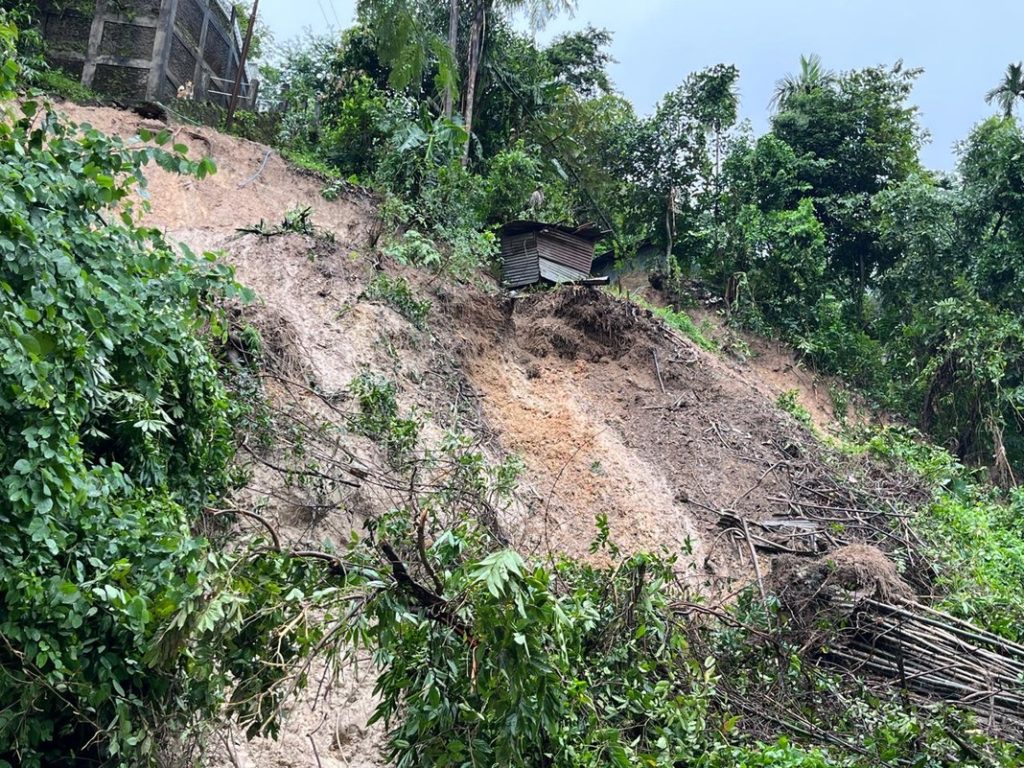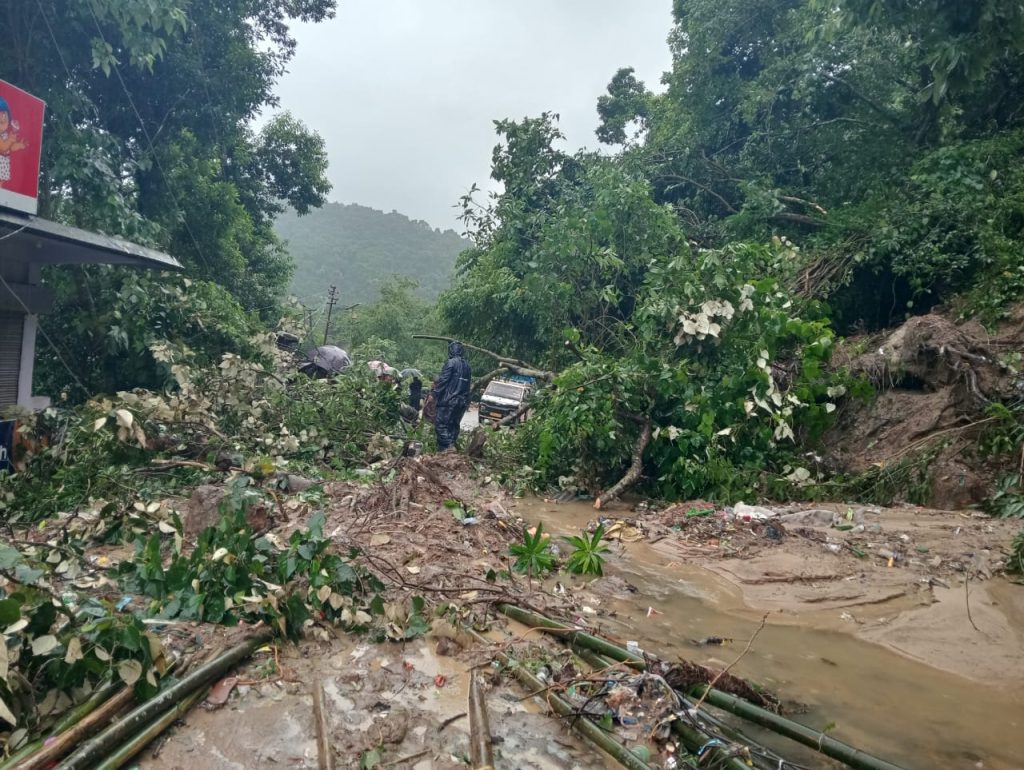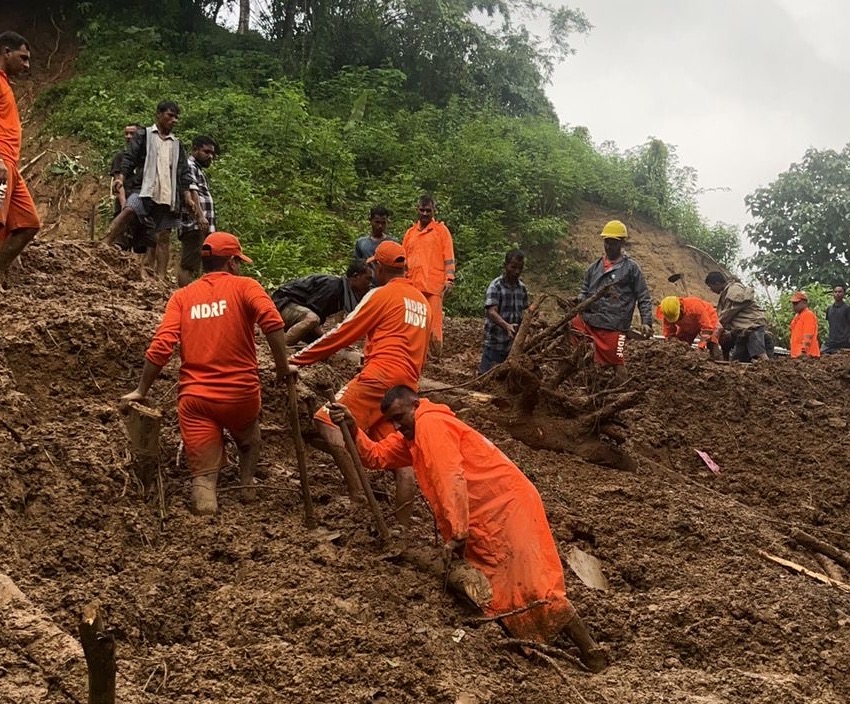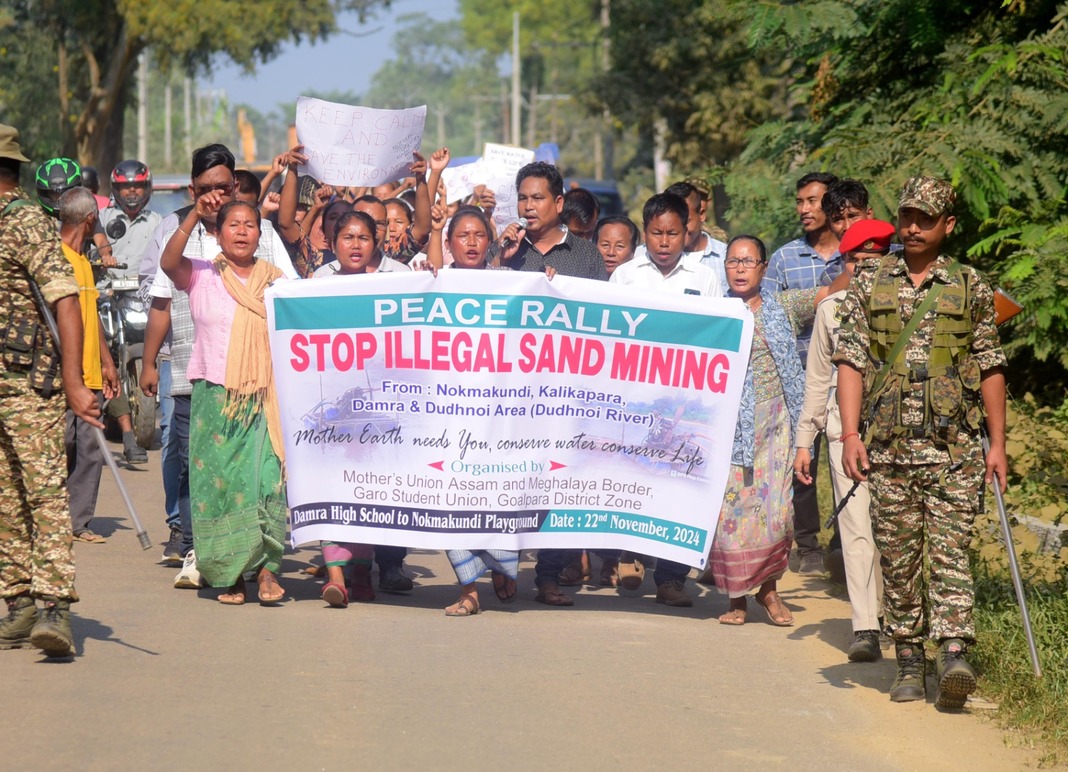ROOPAK GOSWAMI
Shillong, Nov 21: Researchers who have been studying landslides say intense and sustained rainfall significantly impacts slope stability and the effects were particularly pronounced during the monsoon months of July, August, and September 2021, which experienced consistent heavy rainfall.
“By analyzing data from April 2021 to March 2022, researchers observed how rainfall infiltration reduces soil matric suction—a critical factor in soil stability—while increasing groundwater levels. In July alone, rainfall exceeded 245 mm, leading to a rapid decline in matric suction, increased groundwater levels, and heightened slope displacement. This combination of factors makes the area prone to landslides, particularly during peak monsoon seasons” a study done by researchers from the National Institute of Technology (NIT) Meghalaya who had investigated unstable slopes in Mawiongrim, Shillong says.

The study published in the International Journal of Geotechnical Engineering combines real-time monitoring with numerical analysis and provides valuable insights into the mechanisms behind rainfall-induced slope instability.
One of the authors of the paper Rasmiranjan Samal is currently doing his PhD under Smrutirekha Sahoo a faculty member at NIT Shillong on establishing remedial measures to stabilize the unstable slopes using locally available Bamboo while the other one Ms J. Sharailin Gidon from Meghalaya has done his Ph.d on Real-time monitoring and numerical analysis of rainfall-induced slope instability under Smrutirekha Sahoo a faculty member at NIT Shillong.
The studies suggest that Meghalaya government can effectively warn residents of impending landslides by implementing real-time monitoring systems with sensors to track rainfall, soil stability, and groundwater levels, integrating the data into a centralized system for accurate predictions.
Early warning systems using sirens, SMS alerts, and public address systems can ensure timely evacuation during emergencies. Continuous analysis of rainfall patterns and geotechnical data, as highlighted in the Mawiongrim study, can enhance preparedness by identifying triggers of slope instability.
Another study says alarms and brief messages can also be set up to alert the administrative staff members in different capacities, making them aware of an impending landslide and advising them to evacuate the area. “Placing at least five different types of sensors for each zone could help monitor many landslide-prone zones over a sizable region if all the wireless networks from those zones were connected to the same system” the study says.

“This would help create an accurate and dependable landslip prediction model based on multivariate statistical analysis of several data sets. This may be especially helpful to those who reside in landslide-prone areas, as it could even save their lives” the study says.
Case-specific slope stabilization measures, such as using locally available bamboo and ground reinforcement techniques, alongside proper drainage management, can further reduce risks.
” The government should take action after carefully investigating the slopes in the region prone to failures. By installing real-time monitoring systems and accordingly, early warning systems using sirens to alert the locals for timely evacuation of the place, potential catastrophic disasters can be avoided” Smrutirekha Sahoo, a faculty member at NIT Shillong says.
“Case-specific remedial measures can also be undertaken/installed under the supervision of concerned experts in terms of ground reinforcement techniques,” she says as this can resist the stresses generated/instability in the soil to a large extent because of rainfall-induced, seismic or because of any anthropogenic activities.




